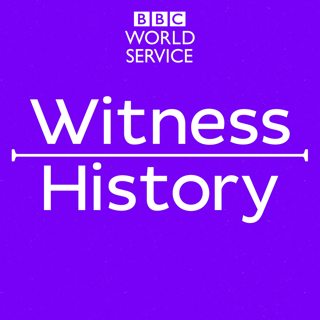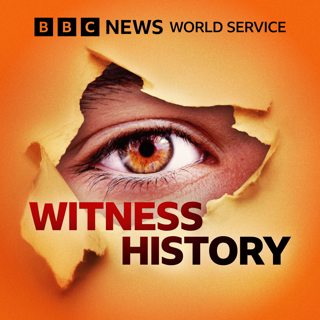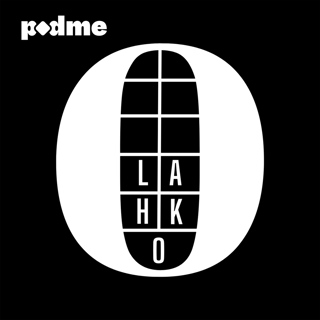
The Creation of the Cervical Cancer Vaccine
How a scientific breakthrough led to the invention of the revolutionary cancer vaccine. In the 1980s, it was established that cervical cancer was caused by the Human Papilloma Virus (HPV) which is usually spread through sexual intercourse. In 1989, scientists Ian Frazer and Jian Zhou at the University of Queensland began working on the basis of a possible vaccine for HPV Their solution was to use parts of the virus's own genetic code to create a virus like particle (vlp) which would trigger an immune response. Alex Last has been speaking to Professor Ian Frazer about their discovery.(Photo: Electron micrograph of virus like particles formed from the outer protein coat of the human papillomavirus (HPV). The proteins form a virus-like particle that does not contain any genetic material. Credit: Science Photo Library)
26 Syys 20189min

Isadora Duncan - Dance Pioneer
Sometimes called the 'Mother of Modern Dance' she was born and brought up in the USA. Isadora Duncan performed across Europe in the early 20th Century, and her free-flowing movements caused a sensation among dancers and choreographers alike. Simon Watts brings together archive accounts of the dancer whose private life was almost as controversial as her dancing.Photo: Isadora Duncan. Credit: Getty Images
25 Syys 20188min

The South African Army In Lesotho
South Africa sent 600 soldiers into Lesotho to quell political unrest in September 1998. Mamello Morrison was an opposition protestor. She spoke to David Whitty in 2014 about the ensuing violence. This programme is a rebroadcast. Photo: Members of South African National Defence Force (SANDF) deployed in Lesotho. Credit: Walter Dhladhla/AFP
24 Syys 20188min

Brazil's Nuclear Accident
In September of 1987, two waste pickers in the Brazilian town of Goiania broke into a disused medical clinic and stole a radiotherapy machine, triggering the biggest ever radioactive accident outside a nuclear facility.Hundreds of people were contaminated and four people died. Thomas Pappon spoke to one of the victims and the physicist who was the first to assess the scale of the accident. Photo of technicians collecting nuclear waste in the contaminated scrap yard in Goiania. Copyright CNEN.
21 Syys 20188min

The Arnhem Parachute Drop
Thousands of Allied troops parachuted into the Nazi-occupied Netherlands in September 1944. At that point, it was the most ambitious Allied airborne offensive of World War Two. British, American and Polish troops were dropped behind German lines in an attempt to capture a series of bridges on the Dutch/German border. Mike Lanchin has spoken to Hetty Bischoff van Heemskerck who, as a young woman, watched the Allied paratroopers come down close to her home in the city of Arnhem.(Photo: Allied planes and parachutists over Arnhem, Getty Images)
20 Syys 20188min

The Battle of Algiers
In September 1966, a film was released that has come to be seen as one of the great political masterpieces of 20th-century cinema. Shot in black-and-white, the Battle of Algiers recreates the turbulent last years of French colonial rule in Algeria. Louise Hidalgo has been talking to former Algerian resistance leader, Saadi Yacef, who plays himself in the film and on whose memoirs the film is largely based. Picture: French paratroop commander Colonel Mathieu (played by actor Jean Martin) in a scene from the film, the Battle of Algiers, directed by Gillo Pontecorvo (Credit: Michael Ochs Archives/Getty Images)
20 Syys 20189min

The Cuban Five
Five Cuban spies were arrested in Miami by the FBI in September 1998. After a controversial trial, they were given lengthy jail sentences. The last of the five was released in December 2014 as part of a prisoner swap for an American intelligence officer. Mike Lanchin has been speaking to one of the Cubans, Rene Gonzalez, who was released in 2011. (Photo: Portraits of the Cuban Five. Credit: Nelson Almeida/AFP/Getty Images)
18 Syys 20189min

The Fifteen Guinea Special
The train which marked the end of the steam age on Britain's main-line rail network. The Fifteen Guinea Special was a passenger service which ran from Liverpool to Carlisle on August 11th 1968 to commemorate the withdrawal of steam locomotives from the country's main railways. Steam locomotives had worked on British railways since the early 19th century. Thousands lined the route to see the last locomotives in action. Alex Last speaks to rail enthusiast Mark Smith who was on board the special train. Photo: The locomotive, Oliver Cromwell, was one of four locomotives used on the Fifteen Guinea Special, 11 August 1968 (Mark Smith)
17 Syys 201810min






















